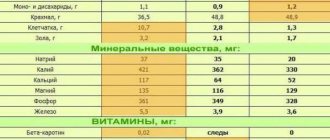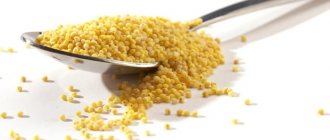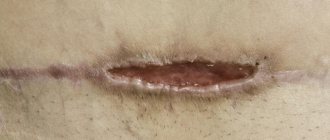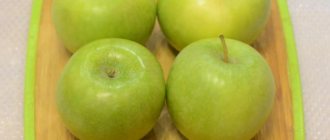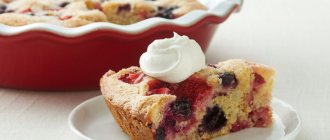Pregnancy and breastfeeding are the most exciting stages in the life of a woman and her baby. During this period, the nursing mother follows a strict diet, is extremely selective and checks every bite that she is going to eat. And there is nothing strange in this, because everything that ends up in the mother’s tummy will end up in her breast milk after some time.
Breastfeeding is beneficial not only for the baby. Lactation helps to contract the uterus, normalize metabolic processes in the body, and also helps a woman quickly get into the desired shape. For normal growth and development of the baby, a nursing mother should eat only high-quality and safe foods that will not cause an allergic reaction and bloating of the small tummy. Nutritious cereals are an integral component of a nursing woman’s diet.
Proper nutrition during lactation
Experts recommend dividing the daily diet into 5-6 doses. A nursing woman should eat at least half an hour before feeding her baby. Of course, not a single mother would agree to eat exclusively lean foods and raw vegetables all this time. And the situation does not require this: during the period of breastfeeding, a woman’s menu should be varied, but not to the detriment of the baby.
A variety of cereals are beneficial for the body of a nursing woman. The plant fibers they contain have a beneficial effect on the digestive system.
Porridge contains a large amount of vitamins and microelements, which are so important for the normal growth and development of a child.
Lactation and corn
Despite its usefulness, it is recommended to include corn porridge in the diet no more than 3 times a week when breastfeeding. This frequency is sufficient to enrich the body with the required vitamins and microelements, as well as to improve the functioning of the immune system and tone the body.
Frequent consumption of corn is contraindicated due to its ability to cause colic and provoke discomfort in the digestive tract. Especially if a woman is prone to stomach diseases or if she has an ulcer in the duodenum.
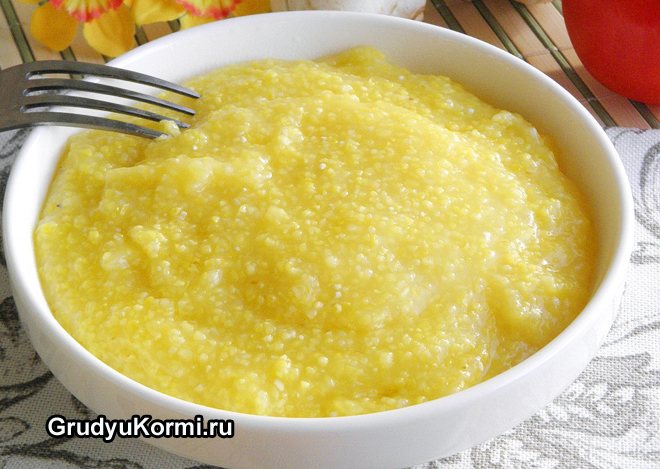
When breastfeeding, indulging in corn is also not recommended. Based on the “traffic light rules,” yellow-colored foods should be consumed with caution during lactation, due to their ability to provoke allergic reactions in the baby.
Thus, it is possible to diversify a nursing mother’s diet with corn porridge only if the gastrointestinal tract is functioning normally and the baby’s response to eating cereal has been previously checked.
What are the benefits of corn porridge?
Many new mothers are concerned about the question: is it possible to eat corn porridge while breastfeeding? It’s not just possible, but extremely necessary, because this is precisely the cereal that contains a huge amount of nutrients and elements.
Corn porridge should occupy a separate position in the diet of a nursing mother, as it is a real storehouse of nutrients. To understand how good corn porridge is, you should pay attention to its obvious advantages:
- Corn is rich in fiber;
- The plant culture contains more than 20 minerals;
- Helps cleanse the body, effectively removes waste and toxins;
- Helps improve immunity;
- It is a product that does not cause allergic reactions;
- Has a beneficial effect on the cardiovascular system;
- Corn is not a high-calorie product, so new mothers do not have to worry about their figure.
However, you should not eat only corn. It should be used with special caution by women who often suffer from constipation. This also applies to the child. If the baby cannot go to the toilet from time to time, the nursing mother should limit the use of this crop.
Useful properties of porridge
Healthy corn porridge and more. Many other cereals are also rich in vitamins and microelements. But not all cereals can be easily eaten without fear while breastfeeding. When choosing, it is necessary to take into account the digestive characteristics of a woman and child, as well as a predisposition to allergic reactions.
It is worth highlighting which porridges are suitable for breastfeeding:
- Buckwheat. Vitamin B1, B2 is presented, it contains a lot of potassium, magnesium, phosphorus, sulfur. Eliminates anemia, increases the amount of milk, the structure of hair, teeth, skin, and is quickly absorbed. It is not recommended to use it with milk, as the products are not very compatible and are difficult to digest.
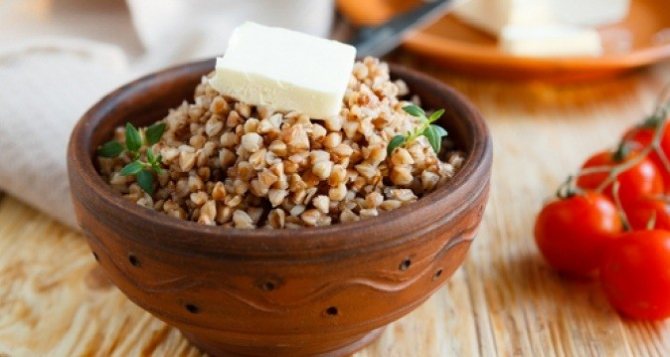
- Oatmeal. Contains vitamins A, C, group B, sodium, phosphorus, ferum, magnesium, potassium, calcium. Helps cleanse the body, helps relieve intoxication, improves the functioning of the immune system, and helps in stressful situations. Contains gluten, so the main contraindication is its intolerance. Also, oatmeal is not suitable for those who have serious problems with the heart and kidneys.
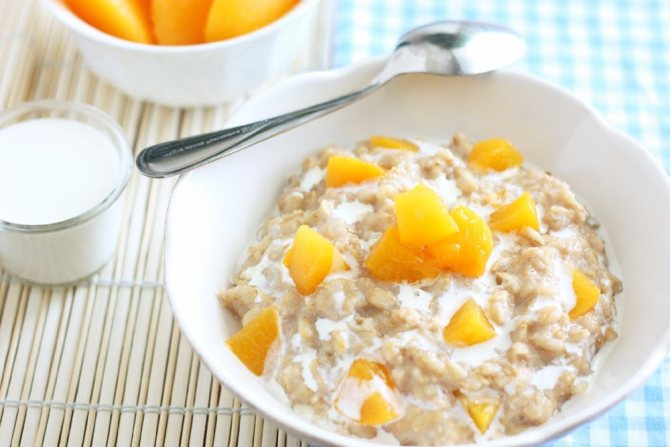
- Millet. It has sufficient benefits, contains vitamins B, E, PP. Among microelements, millet porridge boasts a high content of sodium, potassium, calcium, magnesium, and ferum. It promotes more efficient functioning of the heart, the establishment of hematopoietic processes, memory, and the functioning of the immune system. It is normally absorbed and rarely provokes negative reactions. Do not overuse if there are problems with bowel movements or the functioning of the gastrointestinal tract.
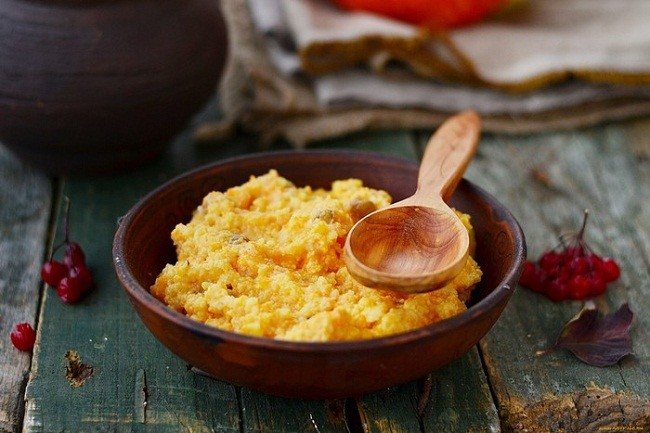
- Rice. Rich in vitamins B, H, contains sulfur, ferum, phosphorus, magnesium. Improves bowel movements, helps relieve fatigue, cleanse the body and get rid of stress. Known for its strengthening properties for the nervous system. Contraindicated for high blood pressure, heart disease, and constipation.
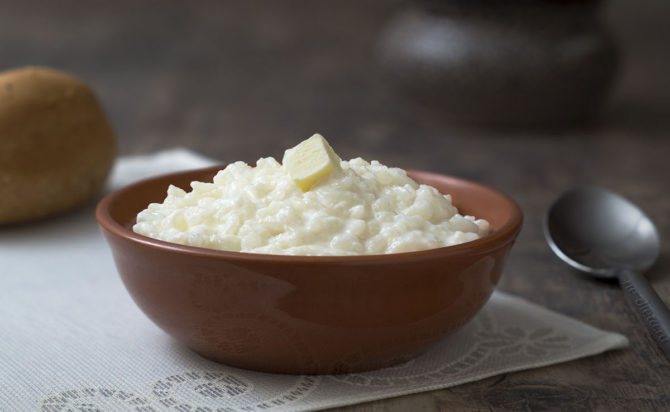
- Corn. The beneficial properties of corn porridge include the following: preventing constipation; removing toxins from the body; normalization of the functioning of the gastrointestinal tract; restoration of skin and hair.
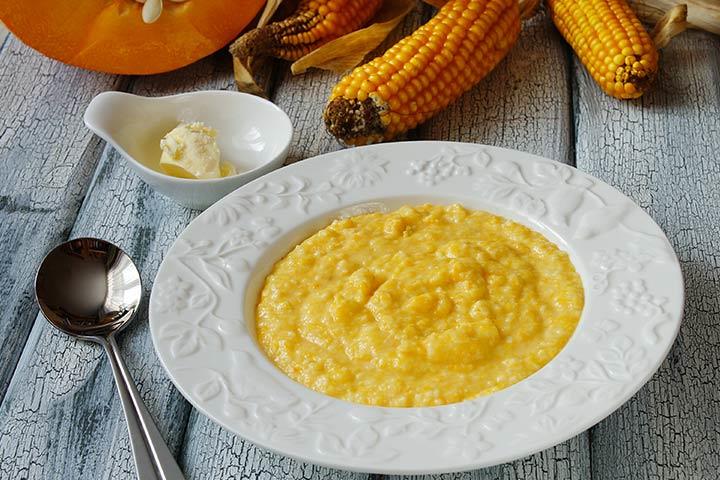
- Manna. Contains B vitamins (B1, B2, B6), magnesium, sodium, calcium, potassium, phosphorus, iron. Has slightly less benefits than other groups. The answer to the question is it possible to use semolina while breastfeeding is not always positive. It helps with intestinal diseases, removes mucus and fat from the body. Contains a lot of gluten, which damages the intestinal walls and causes digestive problems. Gluten is also known for its allergic properties. Milk porridge with semolina is very high in calories, you should not consume it before 5-6 months of breastfeeding and exceed the dose once a week. You can rarely eat manna while breastfeeding.
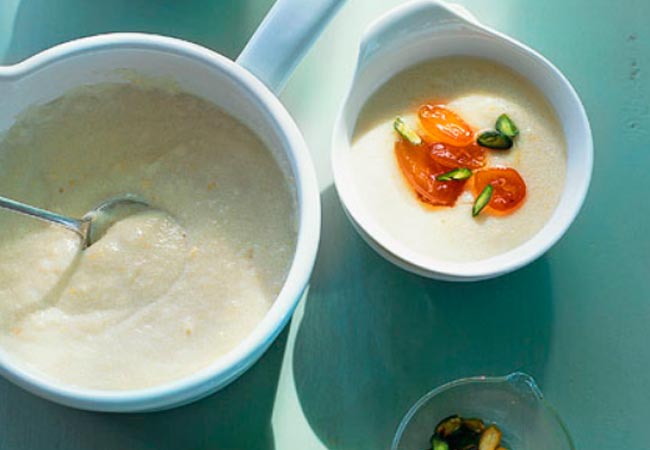
- Barley. Rich in potassium, phosphorus, sulfur, iron, magnesium, B vitamins, PP. Helps to lose weight, cope with allergic reactions, is well absorbed, gives a feeling of fullness for a long time, relieves stress and improves immune function. It practically does not give a negative reaction and does not cause harm to a fragile body. It is allowed to be used already in the first months of life up to three times a week. Contraindications: severe diseases of the cardiovascular system, organs of the food digestion system.

- Pearl barley. Barley for breastfeeding is administered a month after the birth of the child. It contains potassium, phosphorus, bromine, vitamins A, E, B. It improves the attractiveness of a woman, promotes a healthy body, and weight loss. Barley has contraindications when breastfeeding: it can provoke an unpredictable reaction in some patients; it should be eaten with caution.

We recommend reading: Is it possible to eat dumplings while breastfeeding?
Useful tips
Today, corn porridge is far from the only product obtained in the process of processing this agricultural crop. Some recommendations will help you avoid even the most minor problems and build the right diet during lactation:
We recommend reading:Can a nursing mother eat apricots?
- You need to cook corn properly. During the first few months, you should limit your consumption of fried foods: for babies this is heavy food.
- Corn sticks or flakes are a great way to treat yourself to something sweet, but you shouldn't overindulge.
- During lactation, it is not recommended to eat fresh corn (this can cause bloating in the small tummy and colic in the baby);
- Corn products should be introduced into the diet only after three months of breastfeeding;
- Canned corn has no place in a nursing mother's diet;
- Do not forget about such a product as puffed corn: it is low-calorie and nutritious, safe for the health of a nursing woman and her child.
Mom must watch her diet. Porridges form the basis of nutrition for pregnant and lactating women, but you should not overuse the same product. Today there is a huge number of a wide variety of cereals that can be not only healthy, but also very tasty.
The benefits of corn porridge for a nursing mother
When a mother feeds her baby with breast milk, she must carefully monitor her own diet. A woman’s diet during lactation is designed in such a way that all lost microelements, vitamins and minerals are replenished. Therefore, the diet includes dishes rich in composition, which include corn porridge. She provides the mother with the following components:
- vitamin E (a powerful antioxidant that prevents oxidation processes in the body and has a beneficial effect on skin and hair);
- B vitamins (B1 and B5) improve the functioning of the nervous system, especially in the presence of signs of postpartum depression;
- vitamin A (improves vision, has a beneficial effect on the body’s immune defense);
- nicotinamide (improves general metabolic processes in mother and child);
- silicon (improving the functioning of the gastrointestinal tract);
- phosphorus (responsible for mineral metabolism);
- fiber (body cleansing, intestinal stimulation).
The dish is so healthy that it is introduced as the first complementary food to a baby on artificial or natural feeding. When breastfeeding, corn porridge improves the functioning of the cardiovascular, nervous, digestive and immune systems. In addition, the product is hypoallergenic, so it does not pose a danger to the baby.
Will your baby like porridge?
It is a rare mother who is able to feed her baby with breast milk for a whole year, and there is no urgent need for this. The baby’s diet, just like the diet of a nursing mother, should be varied. For this reason, a completely logical question arises: “Can children under one year old have corn porridge?”
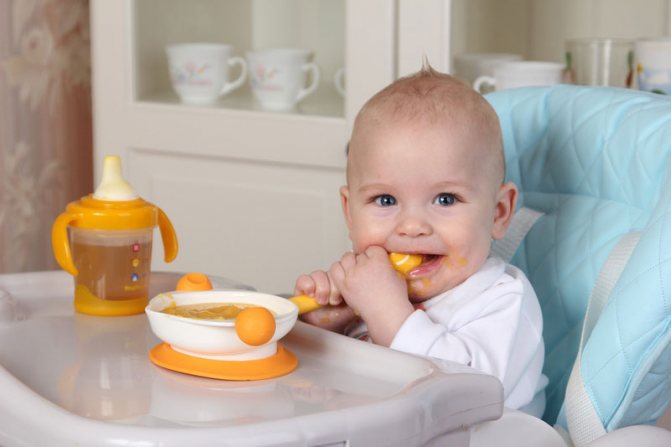
Corn porridge is very healthy for a small child. It contains a large amount of vitamins and microelements that are beneficial for the growth and development of the child.
However, it is worth noting one characteristic feature: corn porridge contains gluten, a substance that can provoke an allergic reaction.
You should not give this porridge to a small baby. If the child is 1 year old, then the use of this product should not be systematic. Ideally, introduction to corn porridge should take place no earlier than 8-9 months.
Cereal porridges are very healthy and nutritious. They should be present in the diet of a nursing woman and a small child. They just need to be used with extreme caution.
Can nursing mothers eat corn porridge?
Women who are breastfeeding cannot do without all kinds of cereals, as they are very healthy and are included in the list of foods allowed during the lactation diet. Corn grits should not be consumed during breastfeeding only in one case - if the child has gluten intolerance. This substance is found in large quantities not only in corn, but also in grains, wheat, oats, rye, and barley. If the baby does not have allergies, breastfeeding mothers can safely eat any of the listed cereals.
Compound
Cereal structure:
- Fats, proteins, carbohydrates.
- B vitamins (B1, B2, B5, B6, B9).
- Carotene.
- A, RE, RR, NE, Niacin, E.
- Macroelements (potassium, phosphorus, calcium, sulfur, magnesium, sodium).
- Trace elements (aluminum, zinc, chromium, boron, iron, titanium, manganese, tin, copper, nickel, molybdenum).
- Dextrins and starch.
- Disaccharides, monosaccharides.
- Essential amino acids.
- Nonessential amino acids.
Corn porridge is tasty and has a specific, pleasant aroma of boiled cobs, and it is also very healthy. An important feature for mothers and infants is its hypoallergenicity, due to the complete absence of gluten in the cereal.
How to cook corn porridge
The recipe for a healthy breakfast is surprisingly simple.
- Rinse the cereal in cool water.
- Place in boiling salted water. In this case, maintain a ratio of 1:3, namely one glass of cereal to three glasses of water.

The most harmless porridge that a nursing mother can eat from the first days of her baby’s life is corn - Cook the porridge for about a quarter of an hour over low heat, stirring constantly.
- At the end of cooking, add butter to taste.
Steamed corn grits porridge - recipe
Steamed corn porridge is prepared in a double boiler. This method has its advantages, since the dish does not need to be constantly stirred, which saves the young mother’s time.
- Rinse 150 g of cereal well with water.
- Place it in a steamer container and add 300 ml of water.
If you cook the porridge in a 1:2 ratio, it will turn out thick. If desired, you can double the amount of liquid.
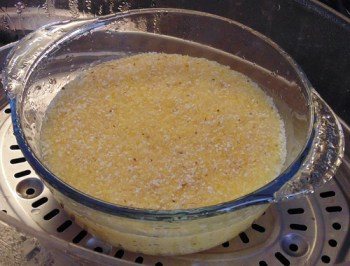
Corn porridge will boil well in a double boiler and will never burn - Cook the porridge for 30–40 minutes.
- Add butter, sugar and salt, set the timer for another 5 minutes.
How to properly consume corn porridge during breastfeeding
It is worth noting that the key to success and getting maximum health results from corn porridge is proper preparation of the cereal. A lot of salt and spices are not appropriate in a mother’s diet, as this can be dangerous for the child’s body. Boiled porridge should not be fried. Sauces added to a dish will not benefit a developing organism.
Properly cooked corn porridge is a combination of cereal (200 g) and water (1 l). This aromatic culinary product goes well with stewed vegetables, a piece of chicken fillet or dried fruits and honey.
The introduction of a bright, sunny ingredient into the diet should begin no earlier than three months after the birth of the baby, this will prevent possible side effects from consumption. It is recommended to eat corn porridge no more than twice a week, not exceeding the norm of 175 g. This proportion will replenish the body with nutrients, vitamins and minerals without causing harm to health.
This porridge may become the first porridge introduced into a mother’s diet after childbirth. This is a tasty and nutritious breakfast if there are no obvious contraindications for consumption.
Is it possible to have oatmeal while breastfeeding?
Contraindications
- Excessive nervous excitability, epilepsy, emotional instability.
- Peptic ulcers of the digestive system. Violation of the integrity of the mucous membrane of the duodenum, small intestine, and stomach.
- Painful menstrual cycle.
- Urolithiasis, renal failure, chronic kidney disease.
And even for mothers who have such contraindications, if the permissible norm is observed, porridge can be eaten no more than twice a week without harm to health.
It is not recommended to administer corn porridge to infants as the first complementary food. It can disrupt the acid-base balance and contribute to the removal of calcium from the baby’s body. It is worth postponing complementary feeding with this type of cereal to a later date, when the child’s menu will be more varied.
Is it possible to have semolina porridge while breastfeeding?


